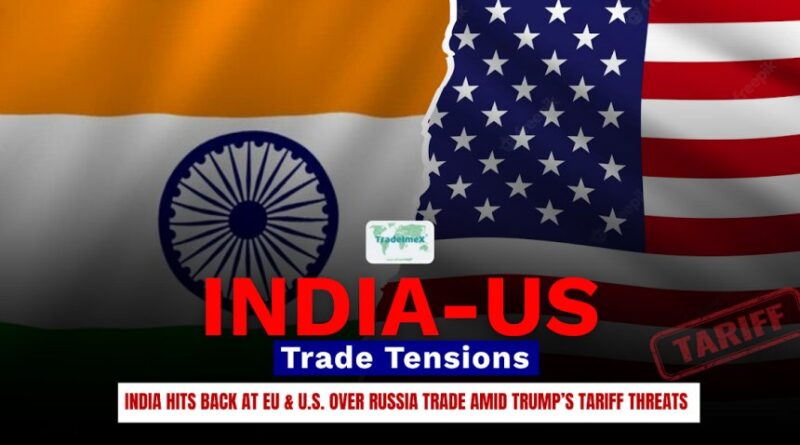Trump Administration’s Trade Policies Shake India’s Economy
The Trump administration’s recent economical manoeuvres have raised questions about the future of India’s foreign sector. The sequence of events began with an unanticipated 25% retaliatory duty on goods imported from India, aimed to restore balance in the Indo-US current account deficit. This surprised Indian government officials who had expected the US to grant them exemptions from these sanctions. Subsequently, the US imposed an additional 25% punitive tariff due to India’s ongoing trade relations with Russia, targeting bargain-priced oil, in the aftermath of the Ukrainian conflict.
These economic decisions did not stop at broad tariffs. They further spread to specific commodities like aluminium goods, branded pharmaceuticals, and furniture that could potentially impact Indian businesses. Alongside, the fee hike for H-1B visa applications, from a range between $2000 and $5000 to a whopping $100,000, is set to make the recruitment of international professionals exceedingly expensive.
This fee escalation will heavily impact India, as a significant majority – about 71% of H-1B visas issued in the fiscal year 2024 – were granted to skilled Indian workers. The 50% tariff would inflict an adverse impact on India’s merchandise exports to the US. Industries such as textiles, gems and jewellery, electronics, and pharmaceuticals will bear the brunt of this tariff imposition.
It is worth noting that in the fiscal year 2024-25, out of India’s merchandise export products valuing $87 billion, electronic goods made up 17.6% of the total worth, followed by pharmaceutical products at 11.8%, and gems and jewellery at 11.5%. Production and job opportunities in these sectors are in jeopardy due to the new tariffs.
The implications of these financial actions on India’s balance of payments differ and will affect various aspects through distinct channels. Evaluating the importance of merchandise trade with the US in relation to India’s GDP, one might assume that the impact on India’s economic growth would be negligible. However, this is merely the direct effect and does not consider the potential indirect consequences via the balance of payments.
The secondary ramifications could be alarming as merchandise exports to the US accounted for around 17 to 20% of India’s total merchandise exports, and these exports comprised between 60 and 65% of India’s imports. This suggests that a steep drop in India’s exports to the US could lead to a widening of the trade deficit.
Conversely, the export of ‘Telecom, Computer and Information Services’, which predominately include IT services and software, surged from making up 32% of the value of merchandise imports in 2023 to 39% in 2025. These inflows are crucial for compensating the merchandise trade shortfall and can provide a cushion if the merchandise trade deficit widens.
Remittances from workers are another economic stronghold, contributing between 15 and 18% of the value of merchandise imports and 23 to 28% of the trade deficit’s value. Over time, India has exhibited a unique trend in terms of the sheer volume of monetary inflows, providing a significant source of economic resilience and aiding to finance trade deficits with minimal hassle.
The Trump administration’s decision to inflate the fee required for issuing H-1B visas to $100,000 has been rationalized on the grounds that these visas were being exploited to engage cheap international replacements for qualified American workers, thereby depriving US citizens of essential job opportunities.
Indian professionals contribute a large portion of the limited number of these visas allocated. Unsurprisingly, this will lead to several consequences. The existing pool of H-1B visa holders providing on-site services will need to be substituted with higher-cost alternatives. This is expected to threaten the competitiveness of Indian IT service companies and hamper income from software and IT-enabled services exports.
A secondary outcome of the H-1B visa fee alteration is projected to affect remittances. For some years now, source regions for remittance influx have been transitioning from the Gulf Cooperation Council countries towards North America, particularly the US. The US constituted a significant 28% of the total remittance inflows in the year 2023-24.
Hence, the impending restriction on the use of the H-1B visa will likely destabilize the regular flow of remittances. The withdrawal of foreign exchange earnings from these sources can potentially affect India’s until now secure current account balance in the external account. This could generate further instability for foreign portfolio investors who have significantly favoured India in the past.
Combined, these factors could result in balance-of-payments issues, instability in the currency, and potentially contribute to a deceleration in economic growth. As India navigates this intricate macroeconomic situation, the interplay of these factors will determine its resilience and response to these unexpected financial challenges imposed by the Trump administration.

